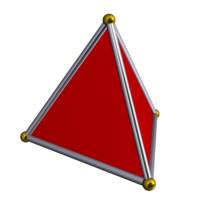
Photo from wikipedia
Minimal edge-transitive nets are regarded as suitable blueprints for the successful practice of reticular chemistry, and per excellence ideal for the deliberate design and rational construction of highly-coordinated metal-organic frameworks… Click to show full abstract
Minimal edge-transitive nets are regarded as suitable blueprints for the successful practice of reticular chemistry, and per excellence ideal for the deliberate design and rational construction of highly-coordinated metal-organic frameworks (MOFs). We report the systematic generation of the highly-connected minimal edge-transitive related nets (transitivity [32]) from parent edge-transitive nets (transitivity [21] or [11]), and their use as a guide for the deliberate design and directional assembly of high-ly-coordinated MOFs from their associated net-coded building units (net-cBUs), 12-connected (12-c) double six-membered ring (d6R) building units. Notably, the generated related nets enclose the distinctive highly-coordinated d6R (12-c) due to the subse-quent coordination number increase in one node of the resultant new related net; that is, the (3,4,12)-c kce net is the (4,6)-c soc-related net, and the (3,6,12)-c kex and urx net are the (6,6)-c nia-related nets. Intuitively, the combination of 12-connected hexagonal prismatic rare-earth (RE) nonanuclear [RE9(μ3-O)2(μ3-OH)12(O2C-)12] carboxylate-based cluster, with purposely-chosen organic or organic-inorganic hybrid building units, led to the formation of the targeted highly-coordinated MOFs based on selected minimal edge-transitive related nets. Interestingly, the kex-MOFs can alternatively be regarded as a zeolite-like MOF (ZMOF) based on the zeolite underlying topology afx, by considering the dodecacarboxylate ligand as d6R building units, delineating a new avenue toward the construction of ZMOFs through the composite building units as net-cBUs. This represents a significant step toward the effective discovery and design of novel minimal edge-transitive and highly-coordinated materials using the d6Rs as net-cBUs.
Journal Title: Journal of the American Chemical Society
Year Published: 2019
Link to full text (if available)
Share on Social Media: Sign Up to like & get
recommendations!